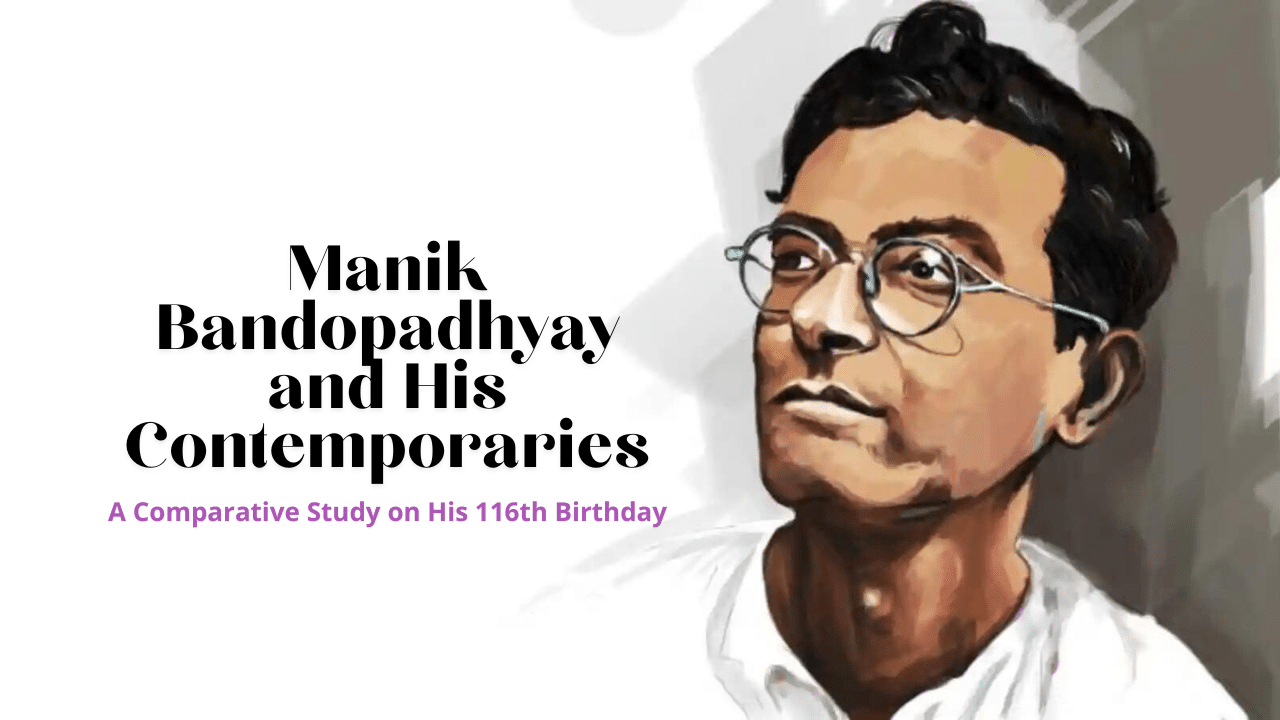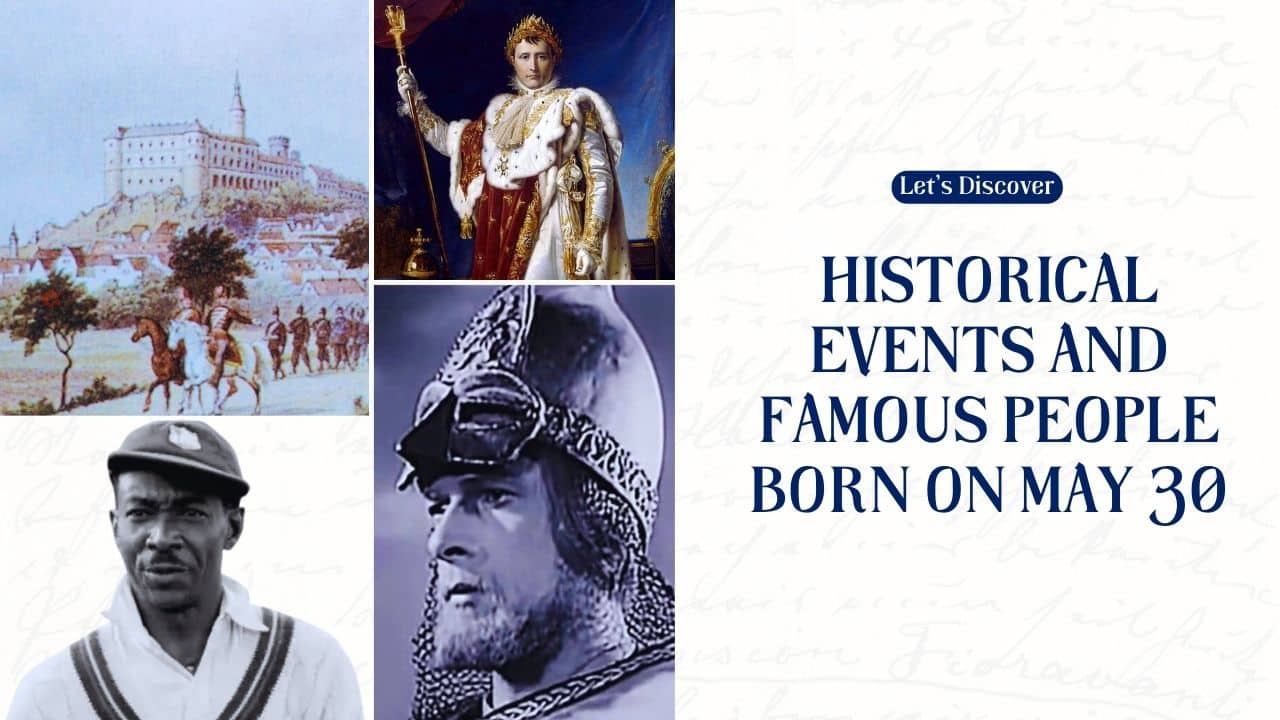Today, we celebrate the 116th birthday of Manik Bandopadhyay, one of the greatest writers in Bengali literature. This blog post is a tribute to his life and works. I will compare his writings with those of his contemporaries. By doing this, I will let you know why Manik Bandopadhyay is so important and how his works differ from those of other famous writers of his time.
Historical and Literary Background
Manik Bandopadhyay lived during a time of great change in India. He was born in 1908 and lived until 1956. During this period, India was fighting for its independence from British rule. These events had an impact on many writers, including Bandopadhyay.
The early to mid-20th century was a rich period for Bengali literature. The writers were exploring new ideas and styles. They wrote about social issues, human struggles, and the beauty of nature. This period saw the rise of many great literary figures who shaped Bengali literature.
Brief Biography of Manik Bandopadhyay
Manik Bandopadhyay, born as Prabodh Kumar Bandopadhyay on May 19, 1908, in Dumka, Bihar (then part of British India), was a prominent Bengali writer. His family hailed from Bikrampur, now in Bangladesh. He was the fifth of fourteen children in his family.
Manik’s early education began in Bikrampur and continued in various schools due to his father’s transferable job. He later attended the University of Dhaka and subsequently enrolled at Presidency College, Kolkata, to study mathematics. However, due to financial difficulties and health issues, he could not complete his degree.
Sure, here is a complete biography table of Manik Bandopadhyay:
| Aspect | Details |
|---|---|
| Full Name | Prabodh Kumar Bandopadhyay |
| Pen Name | Manik Bandopadhyay |
| Date of Birth | May 19, 1908 |
| Place of Birth | Dumka, Bihar (then British India) |
| Family Origin | Bikrampur, now in Bangladesh |
| Parents | Father: Harihar Bandopadhyay, Mother: Manomohini Bandopadhyay |
| Siblings | Fifth of fourteen children |
| Education | Attended University of Dhaka and Presidency College, Kolkata (studied mathematics) |
| First Published Work | “Atashi Mami” (short story) in Bichitra magazine, 1928 |
| Major Works | “Padma Nadir Majhi” (Boatman of the River Padma) |
| “Putul Nacher Itikatha” (The Puppet’s Tale) | |
| Numerous short stories and essays | |
| Writing Style | Realistic, straightforward, and focused on social issues and human struggles |
| Themes | Poverty, social justice, human dignity, and the struggles of common people |
| Personal Challenges | Financial difficulties, chronic health issues (including epilepsy) |
| Date of Death | December 3, 1956 |
| Age at Death | 48 years |
| Legacy | Significant impact on Bengali literature; works studied in schools and universities; |
| realistic portrayal of life continues to resonate with readers | |
| Posthumous Recognition | Widely celebrated for contributions to Bengali literature; works translated into multiple languages |
Table: Complete Biography of Manik Bandopadhyay
Literary Career
Manik Bandopadhyay’s literary career began with the publication of his first short story, “Atashi Mami,” in the magazine Bichitra in 1928. This marked the beginning of a prolific writing career that spanned over two decades.
He wrote numerous novels, short stories, and essays, gaining a reputation for his realistic and unflinching portrayal of life. Some of his most famous works include:
- “Padma Nadir Majhi” (Boatman of the River Padma): This novel tells the story of fishermen living by the Padma River, depicting their struggles and resilience.
- “Putul Nacher Itikatha” (The Puppet’s Tale): This novel explores the lives of people in a small town, focusing on their dreams, disappointments, and social issues.
Manik’s writing style was characterized by its realism and simplicity. He did not romanticize his characters or their situations, opting instead to present life as it was, with all its hardships and challenges. His stories often dealt with themes such as poverty, social justice, and human dignity.
Personal Life and Challenges
Manik Bandopadhyay faced numerous personal challenges throughout his life. He struggled with financial difficulties and chronic health issues, including epilepsy. Despite these hardships, he continued to write prolifically, producing a body of work that has left a lasting impact on Bengali literature.
Death and Legacy
Manik Bandopadhyay passed away on December 3, 1956, at the age of 48. His contributions to Bengali literature have been widely recognized and celebrated posthumously. His works are studied in schools and universities, and his realistic portrayal of life and social issues continues to resonate with readers.
Manik Bandopadhyay’s legacy endures through his powerful storytelling and his commitment to depicting the realities of life. He remains a revered figure in Bengali literature, known for his deep empathy for the marginalized and his critical view of social injustices.
Manik Bandopadhyay’s Literary Contributions
Manik Bandopadhyay wrote many novels and short stories. Some of his most famous works are “Padma Nadir Majhi” (Boatman of the River Padma) and “Putul Nacher Itikatha” (The Puppet’s Tale). These stories are well-known for their realistic portrayal of life.
In “Padma Nadir Majhi,” Bandopadhyay tells the story of fishermen living by the Padma River. He describes their daily struggles, hopes, and dreams. This novel shows the hardships faced by the poor and how they cope with their challenges.
“Putul Nacher Itikatha” is another important work. It explores the lives of people in a small town. The story focuses on their dreams, disappointments, and the social issues they face. Bandopadhyay’s characters are real and relatable. They are often struggling against social injustices and trying to find their place in the world.
Writing Style
Manik Bandopadhyay is known for his realistic writing style. He did not romanticize his characters or their situations. Instead, he presented life as it was, with all its hardships and challenges. This made his stories powerful and moving.
His writing is straightforward and easy to understand. He did not use complicated language or elaborate descriptions. This simplicity made his stories accessible to a wide range of readers.
Contemporary Literary Figures
During Manik Bandopadhyay’s time, there were several other great writers in Bengali literature. Some of the most notable contemporaries were Rabindranath Tagore, Sarat Chandra Chattopadhyay, and Bibhutibhushan Bandopadhyay.
- Rabindranath Tagore: Tagore was a poet, novelist, and playwright. He was the first non-European to win the Nobel Prize in Literature in 1913.
- Sarat Chandra Chattopadhyay: Known for his novels and stories about the lives of the poor and oppressed, Sarat Chandra’s works are still very popular today.
- Bibhutibhushan Bandopadhyay: Best known for his novel “Pather Panchali,” which was later made into a famous film by Satyajit Ray, Bibhutibhushan wrote about rural Bengal and the simple life of its people.
Themes and Styles
Each of these writers had their unique themes and styles. Tagore’s works often explored human emotions, nature, and spirituality. Sarat Chandra focused on social issues and the struggles of the poor. Bibhutibhushan’s stories were rich with descriptions of rural life and the beauty of nature.
Comparative Analysis of Manik Bandopadhyay’s Work
Manik Bandopadhyay’s works often dealt with social issues and the struggles of the common people. His themes were similar to those of Sarat Chandra Chattopadhyay, who also wrote about the hardships faced by the poor. However, Bandopadhyay’s approach was more realistic and less romanticized.
Rabindranath Tagore’s themes were broader, exploring human emotions, nature, and spirituality. While Tagore’s works had a poetic and lyrical quality, Bandopadhyay’s writings were more grounded in reality.
Bibhutibhushan Bandopadhyay’s themes were closer to nature and rural life. His descriptions of the countryside were vivid and detailed. Manik Bandopadhyay, on the other hand, focused more on the social dynamics and struggles of rural communities.
Narrative Style
Manik Bandopadhyay’s narrative style was straightforward and realistic. He did not use elaborate descriptions or complex language. His stories were direct and to the point, making them easy to read and understand.
Rabindranath Tagore’s style was more poetic and lyrical. His works often included rich descriptions and deep philosophical insights. This made his writings more complex and layered.
Sarat Chandra Chattopadhyay’s style was simple but emotive. He had a way of connecting with the readers’ emotions through his storytelling. His characters were well-developed and relatable.
Bibhutibhushan Bandopadhyay’s style was descriptive and immersive. He painted detailed pictures of rural life and nature, drawing the readers into his world. His narratives were slower-paced, allowing for a deeper exploration of the environment and characters.
Characterization
Manik Bandopadhyay’s characters were real and relatable. They were often ordinary people facing extraordinary challenges. His characters were not idealized; they had flaws and weaknesses, making them more human.
Rabindranath Tagore’s characters were more idealized and often represented broader human ideals. They were more symbolic and less rooted in the everyday struggles of common people.
Sarat Chandra Chattopadhyay’s characters were also realistic and relatable. He portrayed the struggles of the poor and the oppressed, giving voice to their hardships and hopes.
Bibhutibhushan Bandopadhyay’s characters were simple and connected to nature. They often reflected the simplicity and beauty of rural life. His characters were closely tied to their environment, making them integral to the story.
Manik Bandopadhyay’s Influence on Bengali Literature
Manik Bandopadhyay had a profound impact on Bengali literature. His realistic portrayal of life and social issues set him apart from his contemporaries. He inspired many writers to explore similar themes and adopt a realistic style in their writing.
Rabindranath Tagore’s influence on Bengali literature is unparalleled. He brought global recognition to Bengali literature with his Nobel Prize win. His works continue to be celebrated for their poetic beauty and philosophical depth.
Sarat Chandra Chattopadhyay’s influence lies in his portrayal of the lives of the poor and the oppressed. His works continue to resonate with readers, and many of his stories have been adapted into films and television series.
Bibhutibhushan Bandopadhyay’s legacy is in his detailed and immersive portrayal of rural Bengal. His works are cherished for their rich descriptions and deep connection to nature.
Recognition and Awards
Manik Bandopadhyay did not receive as many awards during his lifetime as some of his contemporaries, but his works have gained significant recognition posthumously. His novels and stories are studied in schools and universities, and his contribution to Bengali literature is widely acknowledged.
Rabindranath Tagore received the Nobel Prize in Literature in 1913, making him the most internationally recognized Bengali writer. His works have been translated into many languages and continue to be celebrated worldwide.
Sarat Chandra Chattopadhyay received numerous accolades for his works. His stories have been adapted into various forms of media, ensuring his continued popularity.
Bibhutibhushan Bandopadhyay received recognition for his contribution to Bengali literature, particularly for “Pather Panchali,” which was made into an award-winning film by Satyajit Ray.
Personal Reflections and Modern Relevance
Reading Manik Bandopadhyay’s works is an eye-opening experience. His realistic portrayal of life and social issues makes his stories relatable and thought-provoking. His characters, with their flaws and strengths, reflect the complexities of human nature.
Rabindranath Tagore’s works, with their poetic beauty and philosophical insights, offer a different kind of reading experience. They inspire deep reflection and appreciation for the beauty of life and nature.
Sarat Chandra Chattopadhyay’s stories evoke strong emotions. His portrayal of the struggles of the poor and oppressed touches the heart and makes one reflect on social justice and equality.
Bibhutibhushan Bandopadhyay’s works transport the reader to the serene and beautiful countryside. His detailed descriptions create a vivid picture of rural life, making one appreciate the simplicity and beauty of nature.
Modern Relevance
The themes and messages in Manik Bandopadhyay’s works are still relevant today. Issues of social justice, poverty, and human dignity continue to be significant in contemporary society. His realistic portrayal of these issues makes his works timeless.
Rabindranath Tagore’s exploration of human emotions, nature, and spirituality remains relevant. His philosophical insights offer valuable lessons for modern readers.
Sarat Chandra Chattopadhyay’s focus on social issues and the struggles of the poor is still pertinent. His stories remind us of the importance of empathy and social justice.
Bibhutibhushan Bandopadhyay’s connection to nature and rural life is increasingly relevant in today’s fast-paced world. His works encourage a deeper appreciation for the environment and the simple joys of life.
Takeaways
Manik Bandopadhyay’s contributions to Bengali literature are significant and enduring. His realistic portrayal of life and social issues set him apart from his contemporaries. While Rabindranath Tagore, Sarat Chandra Chattopadhyay, and Bibhutibhushan Bandopadhyay each brought their unique styles and themes to Bengali literature, Manik Bandopadhyay’s works remain powerful and relevant.
On his 116th birthday, we honor Manik Bandopadhyay for his contributions to literature. His stories continue to inspire and resonate with readers, reminding us of the importance of social justice, human dignity, and the power of storytelling.
References
- Goodreads. “Works by Manik Bandopadhyay.”
- Nobel Prize. “Rabindranath Tagore: Biographical.”
- Wikipedia. “Sarat Chandra Chattopadhyay.”
- Wikipedia. “Bibhutibhushan Bandopadhyay.”







































